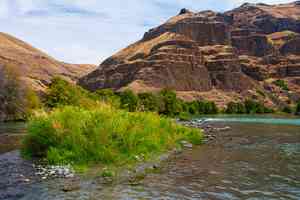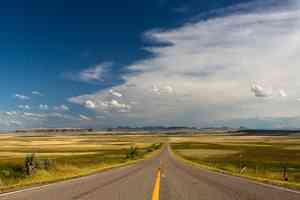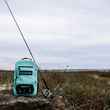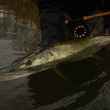It was a passing acquaintance, in the freshness of my youth.
In 1972, my dad had an assignment to do an article on Horn Island, one of several uninhabited barrier islands off the coast of Louisiana, Mississippi, Alabama, and Florida that had just been added to the nation’s collection of pristine seashores. As part of his research, Dad arranged to have the family ferried out to Horn Island with backpack gear and provisions sufficient to support us for five days. We waded ashore with our gear, waved farewell to the boat that had brought us as it headed back toward the mainland, out of sight over the horizon to the north, and turned to set up camp near the one freshwater spring on the island.
What is there to say about that brief love affair? We had a pair of ospreys to keep us company, along with a complement of other birds: terns of various sizes and descriptions, skimmers, sandpipers, herons, even a white ibis, as I recall. The world was reduced to one twelve-mile spit of sand sandwiched between blue water and blue sky, a gentle breeze off the Gulf caressing the beach with waves, the murmur of the surf a constant presence, day and night. After dark, the outline of the constellations was confused by the millions of other stars that we never saw at home, erased as they were by the cloud of artificial light that surrounded us there.
We’d brought an oyster knife along, although none of us knew how to use it, and one of the most important activities on arrival was the search for an oyster bed. Dad found one on the third day. We spent much of the rest of the trip contributing to a midden of shells, sprinkled here and there with blood from the cuts we inflicted on ourselves in our unrelenting effort to get to the meat inside.
On the third night, a squall came in from the south and flattened our tents. At sunrise, we crawled out of the nylon cocoons to find a shrimp boat anchored in the shelter of the island. They were headed in with a full hold and were happy to do a little wholesale business, direct to the consumers. It was the first time in my twenty years that I had more shrimp than I could eat.
That was more than forty years ago. The face of that island, the sound of the waves hissing on sand, the scent of the sea on the southern breeze have come back to me many times in the years since, often in times of stress; in the wee hours of the night as the demands of the workplace seemed almost overwhelming, at the side of sick beds, in hospital halls and waiting rooms, it was a calming touch from the past.
Not long after that interlude, I moved half a continent away to the high plains of Wyoming, and as time has passed, I’ve often wondered how my island paradise has fared since that week-long fling. For nearly 5,000 years, its sands have shifted with the currents and tides, but it has persisted as the centuries passed, a testament to the benefit of flexibility in the face of insurmountable force. Still, the central Gulf coast has had its share of monumental storms in recent decades: Andrew in 1992, Danny in 1997, Georges in 1998, Ivan in 2004, Katrina in 2005, Nate in 2017, along with a dozen others that passed just to the east or west.
The trend, it seems, is not encouraging.
According to specialists with the U.S. Geological Survey, Horn Island lost more than 300 acres of dry land to the ocean between 2000 and 2005 alone. Since the late 1840s, about one-fourth of the island has disappeared into the sea, and the rate has been accelerating since 1990. The Geological Survey experts say that the dredged channels between the islands have been responsible for some of the loss, but each time a major storm comes ashore, a little more island disappears.
In the last thirty years, sea level at Biloxi, Mississippi, the city nearest Horn Island, has risen about a foot, and that change is likely to accelerate over the next fifty years. At the same time, there is reason to believe that hurricanes are gaining force as the Atlantic and Gulf of Mexico continue to absorb heat from the warming atmosphere.
More wind, more water— the future isn’t bright for Horn Island and its sisters islands, or for the vast expanse of wetlands at the mouth of the Mississippi River to the west. They will all melt away, like sand running through the hour glass, a measure of the passage of time ... and our neglect. Until all I have left is the memory.






























Comments